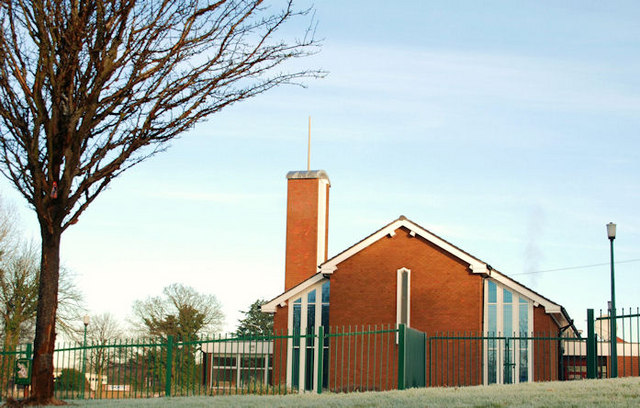by NATHAN BROWN | @browndoggydog
On thousands of living room walls across the world – particularly in Salt Lake City – hang framed copies of a famous document. For all those devout families choosing to display ‘The Family: A Proclamation to the World’, it serves as a guide and a reminder.
For males, the proclamation states: “by divine design, fathers are to preside over their families in love and righteousness and are responsible to provide the necessities of life and protection for their families.” For females: “Mothers are primarily responsible for the nurture of their children.”
One would be hard pressed to find a follower of the Church of Jesus Christ of Latter Day Saints (Mormonism) who’s not well acquainted with the proclamation spoken by the Church’s late president, Gordon B Hinckley.
Followers of Mormonism would also recall the warnings at the end of the address, individuals “who fail to fulfill family responsibilities will one day stand accountable before God.”
Oh… and also the apocalyptic part: “the calamities foretold by ancient and modern prophets” will be brought on by an individual who strays from the path.
‘The proclamation’ is just one popular example I was referred to on more than one occasion when speaking to Mormons about gender expectations in the church. A missionary I spoke to who introduced himself as Elder Seth was one of those Mormons, “look into the proclamation, it explains everything you would need to know.”
Unfortunately what ‘the proclamation’ represents is exactly the problem. Overall the resounding message of the piece is to highlight the importance of the male and female union as the centrepiece of a family, and God’s plan. The work is considered with such high regard, precisely because it echoes the deep-seated values of the Mormon church. Values which propagate – and often advocate – gender inequality.
The interpretation of the Mormon church seemingly pressuring women not to pursue careers or lifestyles outside the household is right, Elder Seth acknowledged. He added a quote by another past Church president, David O. McKay to solidify his point: “No other success can compensate for failure in the home.”
Religions with fairly outdated perspectives on gender certainly aren’t unique, but Mormonism seems especially adamant and forceful compared to some of its Christian counterparts.
Jai Leeworthy is a Melbourne University student and a former Mormon. In his more devout days, he wouldn’t be caught dead even thinking about alcohol. Gradually he shifted into a much less anxious, more sure of himself young adult who enjoys a nice pint on a Friday night.
“I was philosophically opposed to so many ideas in the Church. It’s basically a sin to read anti-Mormon literature being a Mormon. I found that an insulting idea.”
The change was difficult for him. He said, “I thought I shouldn’t be thinking these thoughts, everyone else seems to be doing fine.”
Jai’s problems with Mormonism meant he had to let go of a community he knew, a set morality, and a routine he had followed his entire life. The hardest aspect of all seemed to be losing the ability to properly connect with his family; his parents even thought him to be a “bad influence” on his siblings.
Jai has some very personal insights and qualms against a variety of the Church’s ideas. One of the topics with most prevalence seemed always to be the gender issues inherent in the teachings and behaviours of the church. It’s far from subtle, he explains.
“When they turn 12, boys go through a ritual ceremony which essentially means you’re given the Priesthood. It’s like authority to act in the name of god. You can do baptisms, healings. Break the bread in ceremony. Girls don’t get to be a part of this.”
In fact, girls are unable to join the priesthood at all. They instead attend a class called ‘Young Womens’.
“I obviously didn’t personally go,” Jai said. “But ultimately it’s geared towards preparing women to be good, loving, supportive mothers and wives.”
Women being ineligible to join the Priesthood because they don’t have the ‘right parts’ isn’t just unfair on a spiritual level; to be a leader in the Mormon Church one must be a part of the priesthood.
Consequently, when looking at the hierarchy of leaders in the Church, you’ll find yourself staring at 70 or so predominantly white middle-aged males.
Despite making up half of humanity, women are not allowed to represent themselves in the higher leadership positions of the Church.
Elder Seth insisted this isn’t the case. “In such situations, we believe husbands should be one with their wives and often when male leaders of the Church speak, so too do their wives.”
Even if we accept women work as part of a complementary unit with their husbands in the Church, one can’t help but wonder what God must have been thinking when he decided women weren’t allowed to be the face of leadership.
Of the Mormon bishops I contacted, none were interested in offering their perspective. The preferred to direct me to the proclamation or the official website. The process was repetitive, frustrating at times, and reflective of the larger, self verifying, circular approach to their theological beliefs.
‘The word of God’ is generally considered a good enough reason to abstain from alcohol and coffee, but for a more socially aware generation of Mormons, ‘God’s plan’ might start to look like quite a weak justification for institutionalised inequality.
Image: Creative Commons


